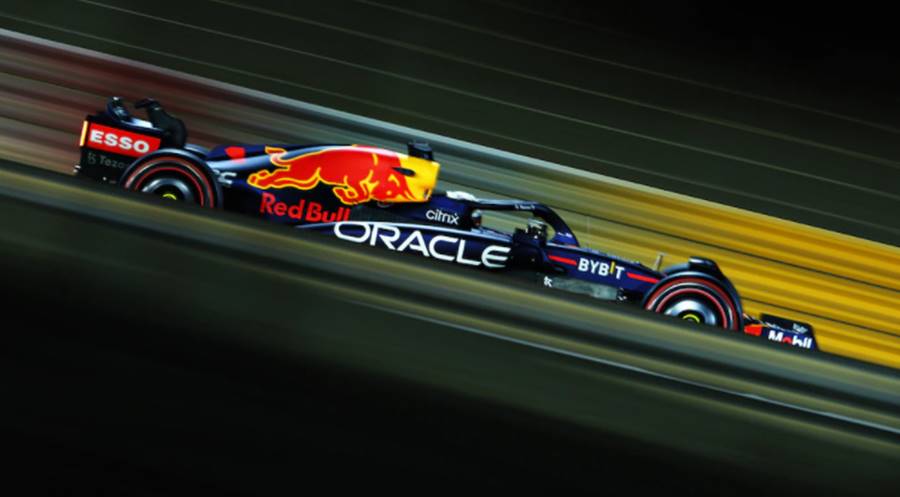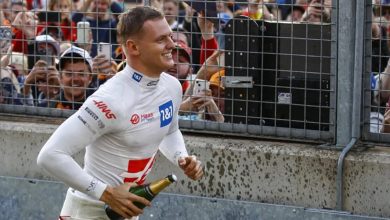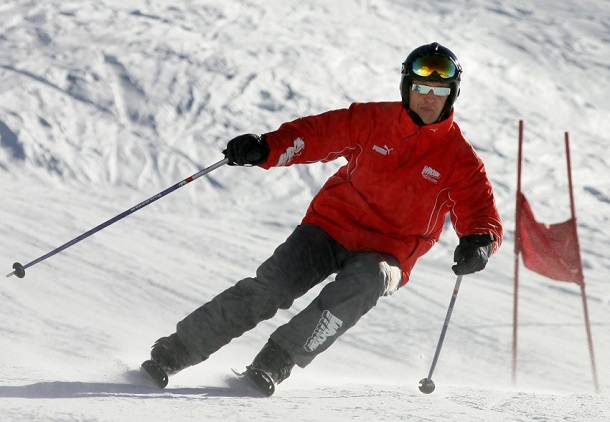Red Bull favorite, Schumacher can surprise

The Formula 1 season opener in Bahrain is just around the corner. These are our impressions after the test drives.
Because they know that they know nothing. At least not much. That is the conclusion that even Formula 1 insiders draw after the last test drives in Bahrain before the start of the premier class season at the same place next weekend. AlphaTauri team boss Franz Tost explains to ABMS why the results of the practice drives hardly go beyond reading the coffee grounds.
Tost: “We only have a fixed size with the tire compounds, with which we can compare ourselves with the other teams. Otherwise, we can only speculate how much fuel was on board and how much of the possible power was used by the engine. That we only know about ourselves.”
What the former BMW F1 logistics boss from Tyrol thinks: only the tires are a measurable constant. Reason: tire manufacturer Pirelli is making five tire compounds available this season. The C5 is the fastest variant, but it also degrades the fastest. The C1 lasts the longest but provides the least amount of grip over a lap. Tire monopolist Pirelli gives the time difference between the individual compounds on one lap as an average of 0.5 seconds. In other words, if a Max Verstappen drives a lap time of 1.32.5 minutes under the same conditions with the soft C4 tires, it would need half a second longer with the C3 compound, which has a medium degree of hardness, in the same lap.
But what Tost and Co. don’t know is how much fuel a competitor’s car had on board and how much power was being drawn from the engine. Background: This season, the Formula 1 cars, whose minimum weight with driver was raised from 795 to 798 kilograms for a short time, start with a maximum of 105 kilograms of petrol on board. However, the rule of thumb in the premier class is: Ten kilos of extra weight make a car about three tenths slower in one lap. In other words: 40 kilos of difference in weight add up to 1.2 seconds.
As far as the engine is concerned: At Mercedes, the difference between overdrive and maximum performance in racing trim is said to be up to 30 hp. Or the equivalent of up to half a second per lap, depending on the route.
One thing is certain: Only the last of six test days cleared the fog a little. Only then did all the teams more or less simulate the upcoming race weekend. And that’s where Red Bull looked best. Motorsport boss Helmut Marko reveals ABMS: “Our car corresponded to the next week in Bahrain for the most part.”
The man from Graz does not take into account the absolute best time set by world champion Max Verstappen with the C5 tires. Marko: “More important was the time that Max drove with the C3 tires. These are the tires that are used in qualifying on the race weekend.” In addition, according to Marko: “Our big update worked as expected in Bahrain, the two drivers get along very well with the car. We also don’t have a big problem with the bouncing on the straights, which can particularly affect reliability. Mercedes has to get that under control.”
The Red Bull analysis without guarantee shows: You are ahead of Ferrari, an estimated three tenths of a second per lap. Then comes Mercedes. Behind it will be very close. Marko doesn’t quite trust the peace yet: “We know that Ferrari has built a compact car that is also very reliable. But we also know Mercedes: They always whine during the test drives and then it suddenly goes boom. That was in the last one Year the same. They also had problems during the test and still won the first race.”
Alone: From a German perspective, there is reason for hope. Sebastian Vettel seemed very happy with the driveability of his car. Aston Martin didn’t go chasing times yet. Vettel: “We focused on other things.”
Mick Schumacher could take a big step towards midfield with Haas and give up the red lantern from the previous year. Not only the lap times were convincing, the feeling for the car has also improved. The new Haas is much more forgiving to drive than last year’s four-wheeled beast. Schumi junior says: “We didn’t drive as much as we would have liked. But it’s about whether we’re fast or not, and that’s the positive side – we are! We have a good car that we can work with.” In other words: points are within the realm of possibility.
Formula 1 on TV
In 2022, Formula 1 will run on Sky. Last year, the broadcaster introduced a new TV channel especially for the premier class: Sky Formula 1. Here there is motorsport 24 hours a day. All practice sessions, all qualifying sessions, all races are always live and without commercial breaks. In addition, Sky also broadcasts the support races Formula 2, Formula 3 and the Porsche Supercup. Historical races and special programs are also on the programme.





